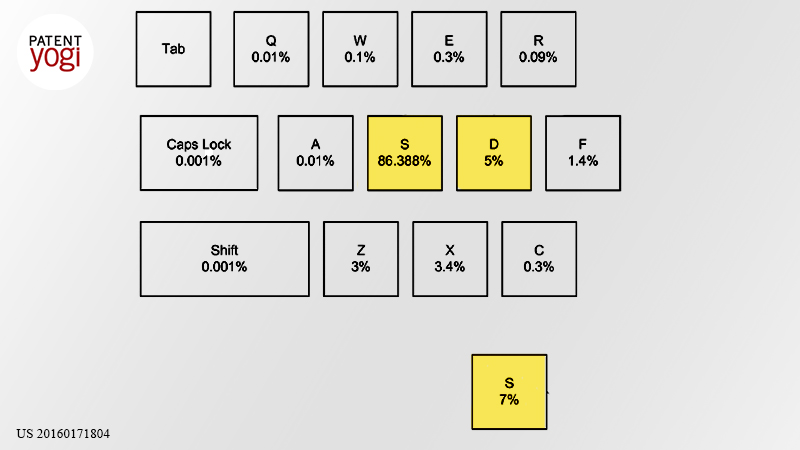Tremors are involuntary muscle contractions and relaxations involving movement of body parts. People suffering from many medical conditions like Parkinsons have tremors in body parts.
Existing authentication methods pose a challenge to users with tremors. For example, it is difficult for people with tremors to type long alpha-numeric passwords in mobile phones and other small devices. Users with tremors may make mistakes such as striking an incorrect key, repeating a key, or missing a key. The number of such committed mistakes is particularly high when people with tremors use touch screen text entry.
Tremors can be classified on clinical and etiologic bases. They vary by intensity and frequency. Common types of tremor include physiologic, enhanced physiologic, essential, Parkinson’s, Cerebellar, Drug-induced, systemic disease, psychogenic, and orthostatic.
IBM has filed a patent for technology for authenticating users on a computing device using a tremor pattern. The computing device includes personal computer, laptop computer, tablet, smart phone, digital thermostat, or TV remote control.
First, a device is used to generate a tremor profile of a user using sensors on the device such as an accelerometer or gyroscope to detect tremors. For example, a user may hold the device for a period of time as the device gathers information from its sensors.
The generated tremor profile which maintains the characteristics of a tremor. The tremor pattern is used to identify and correct mistakes when a user attempts authentication and fails due to a tremor.
The tremor profile may be a generic tremor profile or may be user-specific. Tremor profiles may include amplitude, frequency, affected parts (such as one hand or both), and 3-D orientation. For example, amplitude may indicate the distance a hand may move up and down during a tremor, frequency may capture the slow-down or speed-up in fine motion of a hand as a result of medication or degree of exhaustion throughout a day, and the 3-D orientation may indicate the directions of movement of affected parts caused by tremors. Different affected parts may have different amplitudes, frequencies and orientations. Frequency may be due to shaking of affected parts due to tremors measured in movement cycles per unit time. Generic tremor profiles may be stored based on specific types of tremors. User-specific tremor profiles may be generated from medical diagnoses, input by a user, or detected by the device. For example, a tremor profile for a user with a physiologic tremor may be initialized to a frequency of 6 Hz.
For example, a tremor profile may specify a tremor with amplitude of 2 cm then there is an increased probability of pressing neighboring keys. So, there may be a higher probability for G in the letter F confusion matrix but also a higher probability for H in the letter G matrix. These confusion matrices are used to correct errors while the user tries to authenticate.
Publication number: US 20160171804
Patent Title: AUTHENTICATION OF USERS WITH TREMORS
Publication date: Jun 16, 2016
Filing date: Dec 12, 2013
Inventors: Jarir K. Chaar; Robert G. Farrell; John C. Hartley; Dimitri Kanevsky; Sharon M. Trewin;
Original Assignee: International Business Machines Corporation


